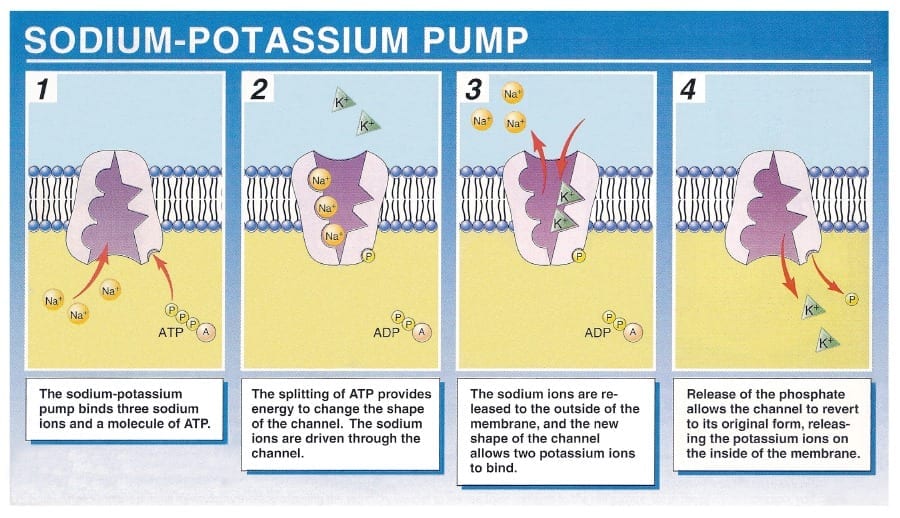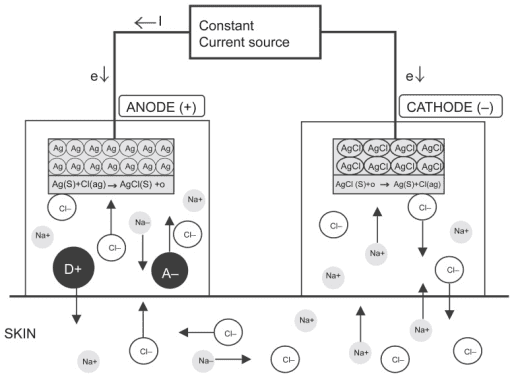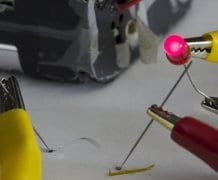
A small ion pump in organic electronics is giving new hope to people suffering from severe nerve pain. Researchers at Linköping University (LiU) and Karolinska Institutet (KI) are the first in the world with technology that can stop pain impulses in living, freely moving rats using the body’s own pain relief signals.
The results of ten years of research are now being published in Science Advances.
The implantable “ion pump” that delivers the body’s own pain alleviators with exact dosage precisely to the location where the pain signals reach the spinal cord for further transmission to the brain, could be in clinical use in five to ten years. Firstly, the device gives hope to the seven percent of the world’s population suffering from nerve pain for whom no other cure has been found – until now. But the pump could also be used to supply therapeutic substances to the brain and other parts of the body in addition to the spinal cord.
“The ion pump can be likened to a pacemaker, except for alleviating pain,” says Professor Magnus Berggren, head of the research conducted by Assistant Professor Daniel Simon and PhD student Amanda Jonsson at the Laboratory of Organic Electronics at Linköping University’s Campus Norrköping, in collaboration with Dr. Zhiyang Song of the Department of Clinical Neuroscience at Karolinska Institutet, where Professor Bengt Linderoth leads the preclinical side of the project.
While a pacemaker sends electrical impulses to the heart, the ion pump sends out the body’s own pain alleviator – charged molecules of what are known as neurotransmitters – to the exact place where the damaged nerves come into contact with the spinal cord. This means that the pain impulses never reach the brain. In this case, the device delivered the neurotransmitter ?-aminobutyric acid (GABA), whose natural task is to inhibit stimuli in our central nervous system.
The technological breakthrough described in the Science Advances article is that the researchers constructed the therapeutic implant using organic electronics – a class of materials capable of easy translation between electronic and biochemical signals –and that it has been used to block pain impulses in awake, freely-moving rats. With the help of the ion pump, positively-charged ions can be administered in four different locations, adapted according to the exact points where the nerve endings meet the spinal cord. An electric current through the ion pump is all that is needed for the GABA neurotransmitter to be spread as a thin cloud at these exact locations on the spinal cord. So far, the pain alleviation has had no negative side effects.
“What’s unique is that we’re using organic electronics to send the body’s own chemical signals. The organic materials are easily accepted by the body, and they communicate just as in biology – with charged ions,” says Assistant Professor Simon, who was also the one who presented the initial results in which an ion pump based on plastic electronics could regulate cell functions in living animals, published in Nature Materials in 2009.
Read more: Ion pump gives the body its own pain alleviation
The Latest on: Pain alleviation
[google_news title=”” keyword=”Pain alleviation” num_posts=”10″ blurb_length=”0″ show_thumb=”left”]
via Google News
The Latest on: Pain alleviation
- Mattresses for back pain — up to $2,600 off my top 7 picks from this weekend's saleson April 27, 2024 at 5:30 am
7. Awara Natural Hybrid Mattress: was from $1,299 | $649 at Awara Sleep Created using natural latex, our Awara Natural Hybrid Mattress review found this bed has a subtle contouring and strong support ...
- Opinion: Elon Musk gives Wall Street what it wants, but more pain could be around the corneron April 27, 2024 at 3:42 am
When asked for any details about the new model by a Wall Street analyst, Musk was terse, saying he had said all he was going to say on the new vehicle. He later tried to focus more attention on the ...
- Ovulation Pain and Relief Optionson April 26, 2024 at 6:55 am
Ovulation pain is mild discomfort mid-cycle. Severe pain from ovulation affects your quality of life. Learn what helps with this pain.
- Painful Truth Campaign encourages non-opioid solutions for pain reliefon April 25, 2024 at 11:21 am
The United States makes up around 4% of the world's population, but it consumes more than 80% of the world's opioids.
- 3 Natural Pain Relief Hacks You Should Know Before Popping The Pills - Nutritionist Shareson April 25, 2024 at 2:22 am
Health expert and nutritionist Nmami Agarwal recommends that natural remedies can be a great alternative to pain-killing medicines.
- Novaa Lab Reviews – Does It Work For Pain Relief or Fake Red Light Therapy Product?on April 25, 2024 at 1:31 am
NovaaLab stands as a beacon of hope for those seeking natural and effective solutions for pain relief and accelerated recovery. Founded by a visionary biohacker, NovaaLab has pioneered the use of red ...
- MVH uses nitrous oxide to bring patients quick pain reliefon April 24, 2024 at 10:39 am
As part of a federal spending bill recently signed by President Joe Biden, Massachusetts Sens. Elizabeth Warren and Ed Markey helped secure much-needed funds for Martha’ Hospital. The federal money ...
- Wellnee Pain Relief Patch Reviews (2024): Scam or Legit?on April 22, 2024 at 9:27 am
On a regular Saturday morning, I was getting ready for my weekly basketball game, something I always looked forward to. But as I got ready and took some practice shots, a sudden pain shot through my ...
- Sleep better and relieve back pain with this 1 gentle stretchon April 22, 2024 at 9:23 am
Twisting movements are essential for many activities we perform every single day — including something as simple as walking, Spano says. And practicing spinal twists can help with mobility, provide ...
- Easy stretches for menstrual pain reliefon April 15, 2024 at 3:09 am
Many poses can help alleviate menstrual pain through a number of mechanisms, including muscle stretching and increasing blood flow to specific areas of the body. In this gallery, we show you simple ...
via Bing News










